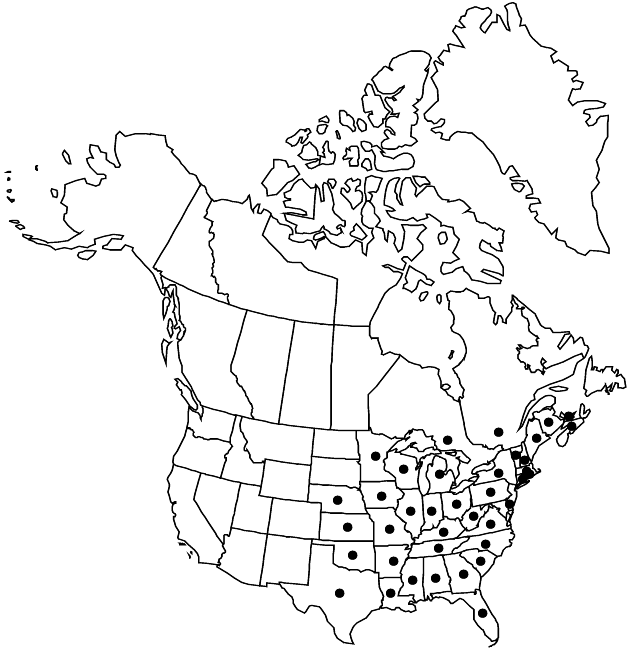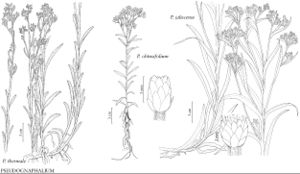Difference between revisions of "Pseudognaphalium obtusifolium"
Bot. J. Linn. Soc. 82: 205. 1981.
FNA>Volume Importer |
FNA>Volume Importer |
Revision as of 18:38, 24 September 2019
Annuals or winter annuals (sometimes faintly fragrant), (10–)30–100 cm; taprooted. Stems white-tomentose, sometimes lightly so, usually not glandular, rarely glandular near bases. Leaf blades linear-lanceolate to elliptic or oblanceolate, 2.5–10 cm × 2–10 mm (relatively even-sized), bases not clasping, not decurrent, margins flat, faces bicolor, abaxial white-tomentose, adaxial green, usually glabrous or slightly glandular, sometimes with persistent light tomentum. Heads in corymbiform (sometimes rounded to elongate) arrays. Involucres broadly campanulate, 5–7 mm. Phyllaries in 4–6 series, white (opaque, usually shiny, sometimes dull), ovate to ovate-oblong, glabrous or tomentose (bases). Pistillate florets 38–96. Bisexual florets 4–8(–11). Cypselae ridged, smooth.
Phenology: Flowering Aug–Oct.
Habitat: Open sites, often disturbed, roadsides, fields, pastures, open woods, in various soils, most abundantly in sand
Elevation: 5–200 m
Distribution

N.B., N.S., Ont., P.E.I., Que., Ala., Ark., Conn., Del., Fla., Ga., Ill., Ind., Iowa, Kans., Ky., La., Maine, Mass., Mich., Minn., Miss., Mo., Nebr., N.H., N.Y., N.C., Ohio, Okla., Pa., R.I., S.C., Tenn., Tex., Vt., Va., W.Va., Wis.
